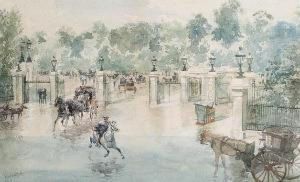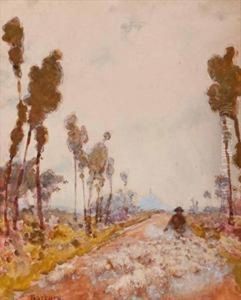Edwin Arthur Norbury Paintings
Edwin Arthur Norbury was an English painter known for his landscapes and portraits. Born on October 14, 1879, in Stafford, Staffordshire, he was part of a generation of artists who were active during the late 19th and early 20th centuries, a period that was characterized by a variety of artistic movements and styles.
Norbury showed artistic promise early in life and pursued formal art education. However, due to the lesser-known nature of his career, detailed records of his education and early influences are not as readily available as those of his more famous contemporaries.
Throughout his career, Norbury worked in various mediums, though he is noted particularly for his oil paintings. His style was traditional, and he had a strong grasp of light and shadow, which he used to great effect in his landscapes. These works often evoke a sense of tranquility and the beauty of the English countryside. He also painted portraits, capturing the likenesses and personalities of his subjects with sensitivity and detail.
During his lifetime, Norbury participated in several exhibitions. He was associated with art institutions such as the Royal Academy, where artists would often submit their work for the chance to be displayed in the prestigious annual exhibition. Exhibiting at the Royal Academy was a significant accomplishment for any artist, as it provided a platform for recognition and the opportunity to sell their work.
Norbury continued to paint throughout his life, contributing to the British art scene. His later work shows a consistency in quality and a dedication to his craft. He passed away on December 27, 1963. While his work may not have achieved the same level of fame as some of his peers, Norbury's contribution to the art world remains a testament to the diverse range of talents and styles that flourished during his time.

